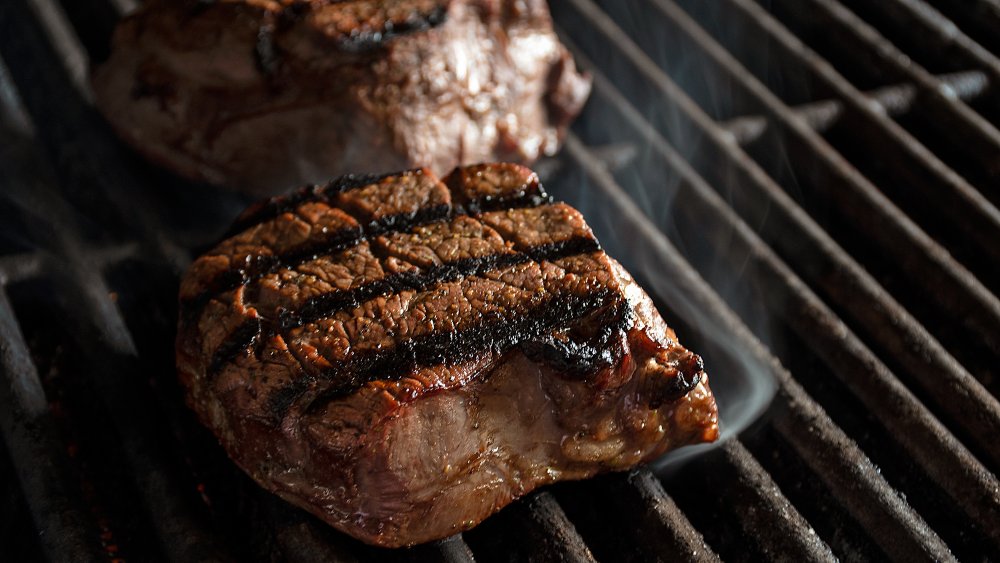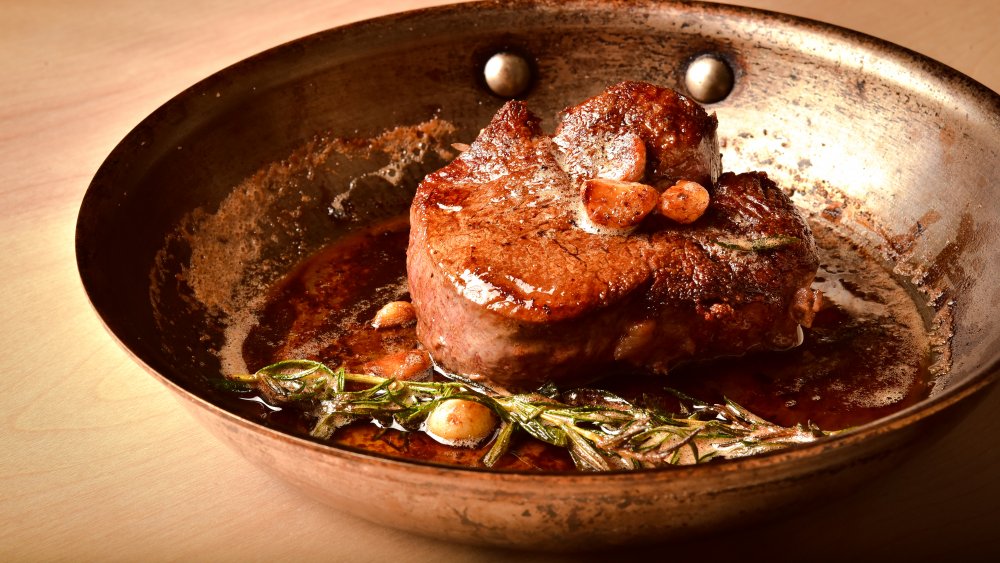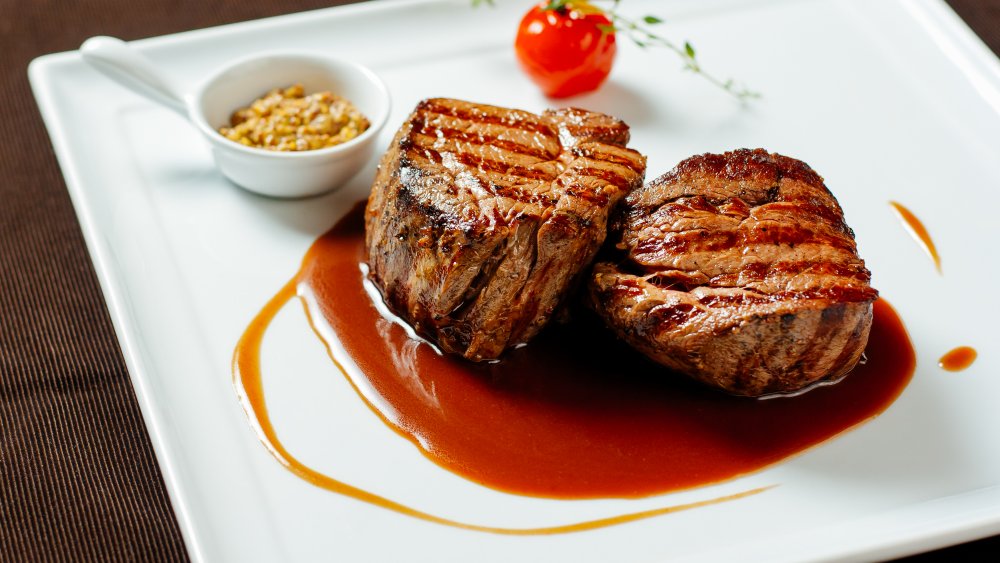Why You Should Think Twice Before Making Filet Mignon On The Grill, According To A Grillmaster
Chef Michael Ollier, who works with the Certified Angus Beef ® brand, is a huge fan of filet mignon. What beef eater wouldn't be? It is, as he describes it, "the most tender cut of beef...lean with a subtle flavor that melts-in-your-mouth," and he goes so far as to crown this cut "the absolute king in tenderness." While he says that he, too, "love[s] the flavor of a filet off the grill," Ollier admits that he does, however, harbor some mixed feelings when it comes to cooking this particular type of steak via the grill method.
Not that there's anything wrong with grilling it, as you'll still wind up with a superior steak, but, as he points out, "filet is a lean cut, [while] great grilling steaks have enough fat that renders and drips onto the coals of a charcoal grill or 'Flavorizer bar' of a gas grill and sizzles," going on to explain that this dripping fat thus "add[s] the flavor atmosphere in the grill, building that great grill flavor we love." What's more, he feels that there is another way to cook filet mignon that tops even the thrill of the grill: pan-searing.
Pan-searing the perfect filet
What's so great about cooking steak in a pan? Ollier insists that "if there is a perfect steak for pan searing, it's the filet mignon," and gives as his reason the fact that the surface area of this steak isn't very big, so using a pan maximizes the amount of surface contact you get. Searing, he says, also "creates a crust and imparts a distinctive flavor and aroma. Having a nice dark crust across the entire filet is a perfect contrast to its juicy pink center."
Yet another reason to pan-sear, Ollier says, is because were he to cook filet mignon any other way, he would "regret a missed opportunity to build a pan sauce," and "building a sauce is one of the main benefits of pan-searing, and...you need a pan to do this." He notes that "while the filet is known for its tenderness, its flavor isn't as robust as a strip or ribeye [so] he filet is the perfect canvas to build a sauce that enhances the steak's flavor." If you're not sure how to go about building the perfect pan sauce, Ollier suggests "butter basting the filet in the pan adding fresh herbs and garlic for layers of extra flavor."
How to do a reverse sear
If you have a somewhat thicker filet, Ollier says you might want to try a reverse sear. This is actually a "double cooking" method since you start out by sous viding your steaks until they're just 10 degrees below the desired degree of doneness. A process that should take about an hour. While the steaks are cooking, Ollier says "you'll have plenty of time to prepare side dishes or just enjoy the company you're with." Once the steaks have reached the right temperature, remove them from the water (and the sous-vide bags, of course) and then just give them a quick sear on each side in a really hot skillet. Ollier says this will result in a nice crust and a "beautiful sear with an edge-to-edge doneness."
When your steaks are seared to perfection, Ollier says they're ready to be paired with a sauce. He suggests a rich wine-based one or something creamy and buttery, and also throws out the idea of upping the ante by adding some scallops for a truly unforgettable surf and turf. (If you're looking for recipes, Certified Angus Beef has a few of Chef Ollier's creations to get you started.)


